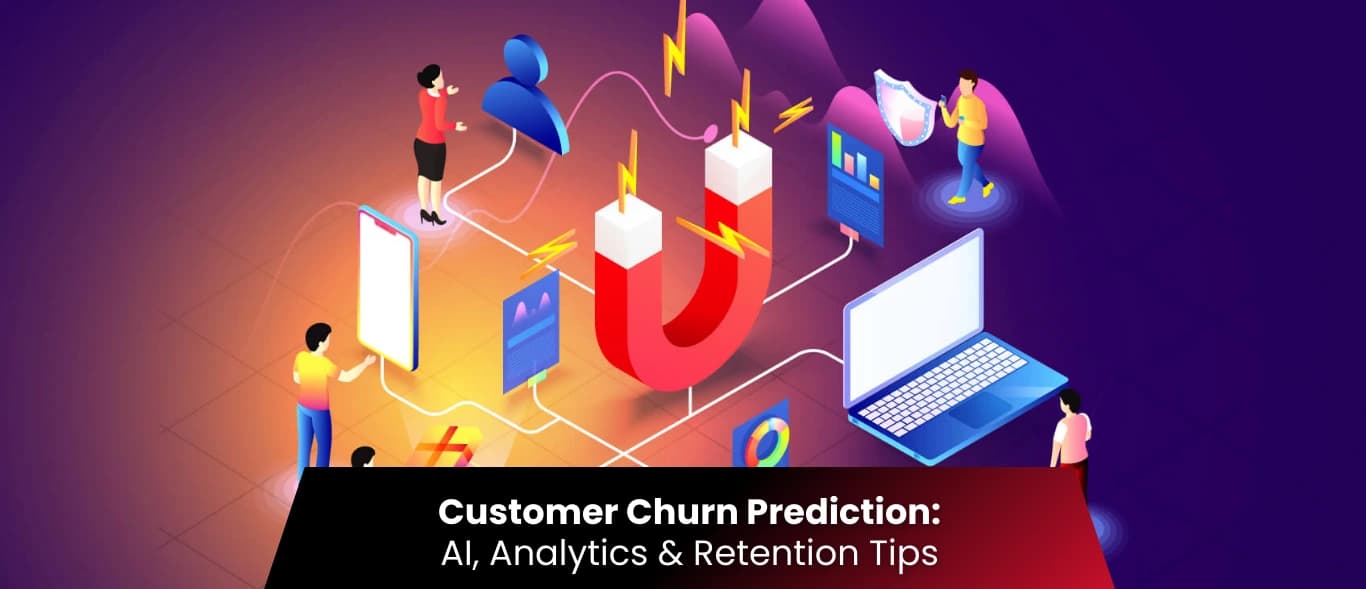In today's age of digitization, you might think that understanding your customers would be optional. Rather, it is quite imperative for modern times. Companies no longer confine themselves to the frontiers of demographic segmentation, but they move into psychographic profiling.
Psychographic profiling digs deep into the lifestyles, values, attitudes, and interests of consumers. Machine learning is at the forefront of this transformation, enabling businesses to create more nuanced and accurate customer profiles than ever before.
Understanding Psychographic Profiling in the Digital Age
Psychographic profiling goes beyond basic demographic information like age, gender, and location. It delves into the psychological aspects of consumer behavior, including:
- Lifestyle choices and daily routines
- Values and beliefs that drive decision-making
- Interests and hobbies that influence purchasing behavior
- Personality traits that affect brand preferences
- Social attitudes and cultural influences
Traditional methods of psychographic profiling relied heavily on surveys and focus groups, which were time-consuming, expensive, and often limited in scope. Machine learning has revolutionized this process by enabling real-time analysis of vast amounts of behavioral data.
The Role of Machine Learning in Modern Customer Profiling
Machine learning algorithms can process and analyze multiple data sources simultaneously, creating comprehensive psychographic profiles that evolve. Here's how ML enhances the process:
Real-Time Data Processing
Machine learning systems can continuously analyze customer interactions across multiple touchpoints:
- Website behavior: Pages visited, time spent, click patterns
- Social media activity: Posts, likes, shares, comments
- Purchase history: Products bought, frequency, spending patterns
- Email engagement: Open rates, click-through rates, responses
- App usage: Features used, session duration, navigation patterns
Pattern Recognition and Segmentation
ML algorithms excel at identifying patterns that humans might miss:
- Behavioral clusters: Grouping customers with similar online behaviors
- Temporal patterns: Understanding when customers are most active
- Cross-channel behavior: Connecting activities across different platforms
- Predictive modeling: Anticipating future behaviors based on past patterns
Key Machine Learning Techniques for Psychographic Profiling
1. Clustering Algorithms
K-Means Clustering and Hierarchical Clustering help identify natural groupings of customers based on their behavioral patterns. These algorithms can segment customers into distinct psychographic profiles without predefined categories.
Example: A retail company might discover that customers who frequently visit sustainability-focused content also tend to purchase eco-friendly products and engage with environmental campaigns.
2. Natural Language Processing (NLP)
NLP techniques analyze text data from various sources:
- Social media posts and comments
- Product reviews and feedback
- Customer service interactions
- Survey responses
Sentiment analysis can determine emotional responses to products or campaigns, while topic modeling can identify recurring themes in customer communications.
3. Deep Learning and Neural Networks
Advanced neural networks can process complex, multi-dimensional data to create sophisticated customer profiles:
- Recurrent Neural Networks (RNNs) analyze sequential data like browsing patterns
- Convolutional Neural Networks (CNNs) process visual data from social media
- Transformer models understand context in text-based interactions
4. Collaborative Filtering
This technique identifies customers with similar preferences and behaviors, enabling businesses to:
- Recommend products based on similar customer profiles
- Target marketing campaigns to specific psychographic segments
- Predict customer needs before they're explicitly expressed
Data Sources for ML-Enhanced Psychographic Profiling
Digital Footprint Analysis
Every online interaction leaves a digital footprint that ML algorithms can analyze:
- Browsing behavior: Websites visited, search queries, time spent
- Social media activity: Posts, likes, shares, network connections
- Mobile app usage: Features accessed, session patterns, location data
- Email behavior: Open rates, click patterns, response times
Transactional Data
Purchase history provides valuable insights into customer preferences:
- Product categories frequently purchased
- Price sensitivity and spending patterns
- Seasonal preferences and timing of purchases
- Brand loyalty and switching behavior
External Data Integration
ML systems can incorporate external data sources:
- Demographic data from third-party providers
- Geographic information and location-based insights
- Economic indicators that might influence purchasing behavior
- Cultural trends and social movements
Benefits of ML-Enhanced Psychographic Profiling
1. Improved Personalization
Machine learning enables hyper-personalized experiences:
- Tailored content that resonates with specific psychographic segments
- Customized product recommendations based on lifestyle and interests
- Personalized marketing messages that speak to individual values
- Adaptive user interfaces that match user preferences
2. Enhanced Customer Engagement
Understanding psychographic profiles leads to better engagement:
- Relevant content delivery at optimal times
- Appropriate tone and messaging that matches customer personality
- Channel preferences for different psychographic segments
- Engagement optimization based on behavioral patterns
3. Increased Conversion Rates
Psychographic insights drive better conversion:
- Targeted offers that align with customer values
- Strategic timing based on behavioral patterns
- Appeal to emotional triggers identified through ML analysis
- Reduce friction by understanding customer preferences
4. Better Customer Retention
Long-term relationships built on understanding:
- Proactive service based on predicted needs
- Loyalty programs tailored to psychographic segments
- Relationship building through shared values and interests
- Churn prediction and prevention strategies
Implementation Strategies for ML-Enhanced Profiling
1. Data Collection and Integration
Establish comprehensive data collection across all touchpoints:
- Customer consent and privacy compliance
- Data quality and validation processes
- Real-time data streaming and processing
- Cross-platform data integration
2. Model Development and Training
Build robust ML models for psychographic analysis:
- Feature engineering to create meaningful variables
- Model selection based on data characteristics
- Training and validation with historical data
- Continuous learning and model updates
3. Privacy and Ethical Considerations
Ensure responsible use of customer data:
- Transparency about data collection and usage
- Customer control over their data and profiles
- Bias detection and mitigation in ML models
- Compliance with data protection regulations
4. Integration with Marketing Systems
Connect psychographic insights to marketing execution:
- Marketing automation platforms
- Customer relationship management (CRM) systems
- Content management systems
- Analytics and reporting tools
Real-World Applications and Success Stories
E-commerce Personalization
Amazon uses sophisticated ML algorithms to create detailed customer profiles based on browsing behavior, purchase history, and even mouse movements. This enables highly personalized product recommendations and marketing messages.
Financial Services
Credit card companies use psychographic profiling to understand spending patterns and lifestyle choices, enabling them to offer relevant financial products and services to different customer segments.
Healthcare Marketing
Pharmaceutical companies use psychographic profiling to understand patient attitudes toward health, enabling more effective communication about treatments and medications.
Automotive Industry
Car manufacturers analyze customer psychographics to understand lifestyle choices and values, helping them design vehicles and marketing campaigns that resonate with specific customer segments.
Challenges and Considerations
Data Privacy and Security
The collection and analysis of psychographic data raises important privacy concerns:
- Consent management for data collection
- Secure storage and transmission of sensitive data
- Anonymization and data protection measures
- Regulatory compliance with privacy laws
Model Accuracy and Bias
ML models must be carefully designed to avoid bias and ensure accuracy:
- Diverse training data to prevent bias
- Regular model validation and testing
- Transparency in model decisions
- Human oversight of automated profiling
Ethical Considerations
The use of psychographic profiling raises ethical questions:
- Manipulation concerns about targeted marketing
- Transparency in how profiles are used
- Customer autonomy and choice
- Social responsibility in marketing practices
Future Trends in ML-Enhanced Psychographic Profiling
1. Advanced AI Integration
The future will see more sophisticated AI integration:
- Emotional AI that can detect and respond to customer emotions
- Predictive analytics that anticipate customer needs
- Automated personalization that adapts in real-time
- Voice and visual analysis for deeper insights
2. Real-Time Adaptation
Profiles will become increasingly dynamic:
- Continuous learning from new interactions
- Real-time profile updates based on current behavior
- Contextual awareness that considers current situations
- Adaptive responses that change based on customer state
3. Enhanced Privacy Controls
Future systems will prioritize customer control:
- Self-service profile management for customers
- Granular consent options for different data types
- Transparent data usage reporting
- Customer-driven profile customization
Conclusion
Machine learning has transformed psychographic customer profiling from a static, survey-based process into a dynamic, real-time system that continuously learns and adapts. By leveraging vast amounts of behavioral data and sophisticated algorithms, businesses can create detailed, accurate customer profiles that drive personalized experiences and improved business outcomes.
The key to success lies in balancing the power of ML-enhanced profiling with responsible data practices, ensuring that customer privacy and trust remain paramount while delivering the personalized experiences that modern consumers expect.
As technology continues to evolve, the possibilities for psychographic profiling will expand, enabling even more sophisticated understanding of customer motivations, preferences, and behaviors. Businesses that embrace these technologies while maintaining ethical standards will be well-positioned to build stronger, more meaningful relationships with their customers.
Ready to implement ML-enhanced psychographic profiling in your business? Schedule a free consultation with our AI and analytics experts to discover how we can help you build sophisticated customer profiles that drive personalized marketing success.


